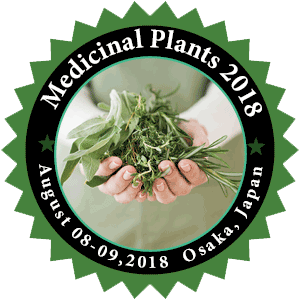
Vinayak Chavan
N. E. S. Science College, India
Title: Documentation of traditional knowledge of Medicinal plants with Bioprospecting potential from Nanded District (Maharashtra)
Biography
Biography: Vinayak Chavan
Abstract
Since time immemorial man utilizes plants for food, shelter and medicinal which is now termed as Bioprospecting potential of plants. The documentation of such potential plants particularly used for medicinal purposes is now a need of hour ( Tripathi 2003, Nuzarat syed et.al 2007).The Nanded district of Maharashtra state with its rich medicinal flora can be a potential center for ethno medicinal research because it is now believed that in the future ethno medicine will be one of the most effective source of healthcare of mankind ( Handa 1992, Dubey et.al 2004). So a survey of this ethno medicinal potential of Nanded district is documented in this work.
The Nanded district of Maharashtra State lies between 18 -15’ to 19-55’North latitude and 77 -78 25’ east longitudinal having an area of about 10332 sq.km.It has a forest cover about 15 -20 % particularly in the Kinwat, Mahur and Bhokar talukas.
The ethnic group like Andh, Gond, Bhills, Banjara, etc. are scattered in the villages of these talukas and forest areas of this district. The Banjara are also called Gormatis are having their settlements known as Tanda.They are situated near the hilly slopes and forest. These Tandas are away from other villages and other communities. The head or President is called as Nayak,Karbharies and older once are Dhavo.They are generally aware of uses and medicinal properties of plants for health care and veterinary purposes of the village, Four people in each village, who are the experts or practitioners, were interviewed and the information on the use of medicinal plants was recorded. The plant species were identified with pertinent literature and the herbarium specimens were deposited in the P.G.Dept.of Botany N.E.S.Science College. Nanded, Maharashtra.
The Data collected on ethno botanical uses of 15 plant species of 11 plant families of Angiospermic plants is represented in Table No.1,Which enumerates the botanical name, family ,common local names ,medicinal plant part used, and available phytochemical information of the plant. The study has revealed that a considerable medicinal plant diversity exist in Nanded district. About the medicinal usages same are altogether new some are common with uses in other parts of country. (Kalita and Deb, 2006) Similar studies are now being conducted in other parts of Maharastra State (Sharma and Majumdar 2003,Nudart Syed et.al 2007) however the future use of this information on formulation, standardization of phytomedicine should be encouraged with sustainable use, other wise these plants will also soon disappear due to our over anthropogenic activities.

